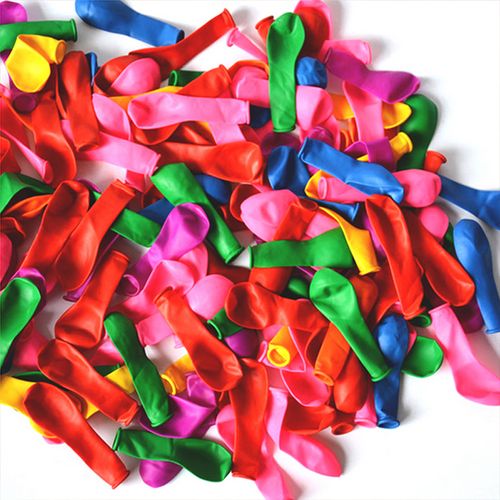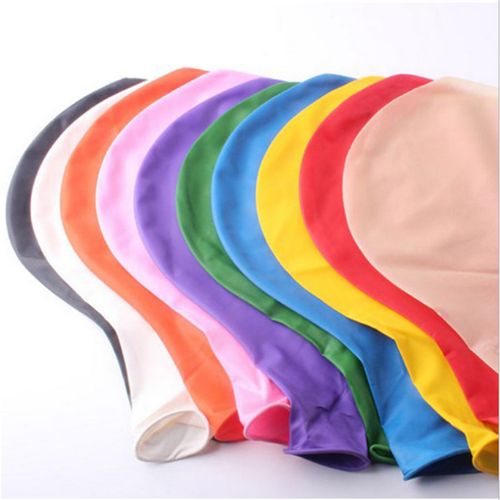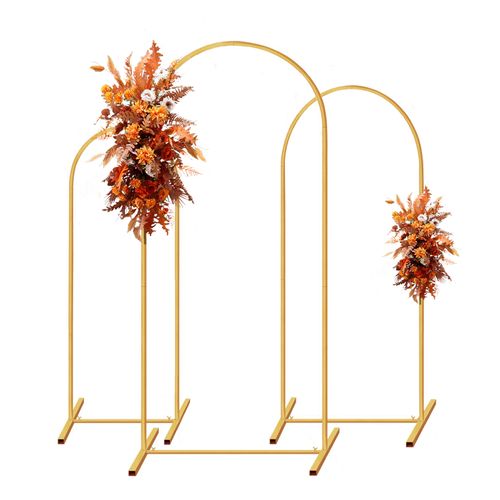Biodegradable Balloons: The Eco-Friendly Choice for Sustainable Celebrations
In an era where environmental consciousness is increasingly important, biodegradable balloons have emerged as a sustainable alternative for those who want to celebrate special occasions while minimizing their ecological footprint. This comprehensive guide explores everything you need to know about biodegradable balloons, from their composition and benefits to proper disposal methods and creative uses.
What Are Biodegradable Balloons?
Biodegradable balloons are made from natural latex derived from rubber trees (Hevea brasiliensis), which is a sustainable resource. Unlike traditional petroleum-based balloons, genuine biodegradable balloons are designed to break down naturally when exposed to the elements, eventually returning to the earth without leaving harmful microplastics behind.
The Science Behind Biodegradation
The biodegradation process of natural latex balloons occurs through several stages:
- Photodegradation: Sunlight exposure begins breaking down the latex polymer chains
- Oxidation: Oxygen in the air reacts with the latex, further weakening its structure
- Microbial Action: Bacteria and fungi in soil or water consume the natural latex material
- Complete Decomposition: The balloon eventually breaks down into natural components
It's important to note that while biodegradable balloons do break down faster than synthetic alternatives, the process still takes time—typically 6 months to 4 years depending on environmental conditions.
Biodegradable vs. Regular Balloons: Key Differences
Understanding the differences between biodegradable and regular balloons helps consumers make informed choices for their celebrations.
Material Composition
Biodegradable Balloons:
- Made from natural latex harvested from rubber trees
- Contain no synthetic additives that prevent decomposition
- Often use natural dyes and pigments
Regular Balloons:
- May contain synthetic latex or be made from mylar/foil (metallized nylon)
- Often include chemical additives that slow or prevent natural breakdown
- Typically use chemical dyes and treatments
Environmental Impact
Biodegradable Balloons:
- Break down naturally over time
- Made from renewable resources
- Harvesting latex can support sustainable forestry when done responsibly
- Lower carbon footprint in production
Regular Balloons:
- Can persist in the environment for decades or longer
- Foil/mylar balloons never fully biodegrade
- Often made from non-renewable petroleum products
- Higher carbon footprint in production
Performance Characteristics
Biodegradable Balloons:
- Slightly more porous, may deflate somewhat faster
- Natural sheen rather than high-gloss finish
- Limited to latex balloon shapes and styles
- Available in natural and earth-tone colors, though color range is expanding
Regular Balloons:
- Longer float time for helium-filled options
- Available in metallic, pearl, and high-gloss finishes
- Come in countless shapes, designs, and characters (especially foil varieties)
- Available in virtually unlimited color options
Environmental Benefits of Choosing Biodegradable Balloons
Opting for biodegradable balloons offers several significant environmental advantages:
Reduced Wildlife Impact
When balloons end up in natural environments, they pose serious threats to wildlife. Animals can mistake balloon fragments for food, leading to intestinal blockages, starvation, and death. Marine animals are particularly vulnerable, with sea turtles often mistaking floating balloon debris for jellyfish.
Biodegradable balloons, while not an immediate solution if improperly disposed of, will eventually break down rather than persisting indefinitely in the environment.
Sustainable Resource Use
Natural latex comes from rubber trees, which:
- Can be tapped for 30+ years without harming the tree
- Absorb carbon dioxide during their lifecycle
- Provide habitat for various species
- Support sustainable agroforestry when properly managed
Reduced Landfill Impact
While all balloons should be properly disposed of, biodegradable options that do end up in landfills will eventually break down rather than taking up space indefinitely.
Lower Carbon Footprint
The production of natural latex typically requires less energy and produces fewer greenhouse gas emissions compared to the manufacturing processes for synthetic balloons, particularly metallized foil varieties.
How to Identify Genuine Biodegradable Balloons
Not all balloons marketed as "biodegradable" offer the same environmental benefits. Here's how to identify truly eco-friendly options:
Certification and Labeling
Look for balloons with credible certifications such as:
- Biodegradable Products Institute (BPI) certification
- TÜV Austria "OK Compost" certification
- Forest Stewardship Council (FSC) certification for sustainable latex sourcing
Material Disclosure
Genuine biodegradable balloons should clearly state they are made from 100% natural latex. Be wary of vague terms like "eco-friendly" or "green" without specific material information.
Transparency About Biodegradation Time
Honest manufacturers will be transparent about how long their balloons take to biodegrade under various conditions, rather than making sweeping claims about rapid decomposition.
Avoid "Oxo-degradable" Claims
Some products labeled "oxo-degradable" simply break down into smaller plastic particles rather than truly biodegrading, potentially causing more environmental harm.
Best Practices for Using Biodegradable Balloons Responsibly
Even biodegradable balloons require responsible use to minimize environmental impact:
Never Release Balloons Outdoors
Even biodegradable balloons can harm wildlife before they decompose. The "Don't Let Go" principle should apply to all balloons, regardless of material.
Proper Disposal Methods
After your celebration:
- Deflate balloons completely
- Cut into small pieces to accelerate decomposition
- Dispose in compost if possible, or in regular waste if not
- Remove and separate any non-biodegradable attachments (ribbons, valves, etc.)
Indoor Use Prioritization
Use biodegradable balloons primarily for indoor celebrations where they can be properly collected and disposed of afterward.
Balloon Alternatives for Outdoor Events
For outdoor celebrations, consider alternatives like:
- Fabric bunting and banners
- Paper decorations
- Pinwheels
- Bubbles
- Planted flowers
Creative Uses for Biodegradable Balloons
Biodegradable balloons can be incorporated into celebrations in numerous environmentally conscious ways:
Balloon Garlands and Arches
Create stunning decorative installations using air-filled biodegradable balloons attached to compostable balloon tape or jute twine. These make perfect photo backdrops without requiring helium.
Table Centerpieces
Air-filled biodegradable balloons on sustainable bamboo sticks create eye-catching table centerpieces that don't block conversation across the table.
Balloon Walls
Construct impressive balloon walls using a grid of compostable materials and air-filled biodegradable balloons for event backdrops.
Interactive Elements
Use biodegradable balloons for party games, message carriers, or reveal moments without outdoor releases.
Balloon Mosaics
Create artistic designs or messages by arranging different colored biodegradable balloons on walls or floors.
Biodegradable Balloon Accessories
Complete your eco-friendly celebration with compatible accessories:
Natural Ribbons and Ties
Pair biodegradable balloons with:
- Cotton string
- Jute twine
- Raffia ties
- Paper ribbon
- Sisal twine
Sustainable Balloon Weights
Instead of plastic weights, use:
- Stone or ceramic weights that can be reused
- Potted plants that double as party favors
- Woven baskets filled with natural materials
- Wooden blocks or decorative elements
Eco-Friendly Inflation Methods
For air-filled decorations:
- Hand pumps rather than electric pumps
- Reusable balloon pumps made from sustainable materials
For helium (used sparingly):
- Consider balloon gas alternatives like air-filled designs on sticks
- If helium is necessary, use larger balloons in smaller quantities
The Future of Biodegradable Balloon Technology
The biodegradable balloon industry continues to evolve with promising innovations:
Enhanced Biodegradation
Researchers are developing natural latex formulations that biodegrade more quickly while maintaining performance characteristics.
Expanded Color and Finish Options
New natural dyes and processing techniques are expanding the aesthetic possibilities for biodegradable balloons, making them more competitive with conventional options.
Compostable Accessories
The industry is moving toward fully compostable balloon systems, including ties, valves, and decorative elements that break down alongside the balloons themselves.
Carbon-Neutral Production
Some manufacturers are implementing carbon offset programs and sustainable energy use in production facilities to further reduce environmental impact.
Common Questions About Biodegradable Balloons
How long do biodegradable balloons take to decompose?
Under ideal conditions (exposure to elements, proper soil bacteria, etc.), biodegradable latex balloons typically take 6 months to 4 years to completely decompose. This varies based on environmental factors like temperature, moisture, and sunlight exposure.
Are biodegradable balloons safe for wildlife?
While biodegradable balloons eventually break down, they can still pose choking or intestinal blockage risks to wildlife before decomposition occurs. This is why proper disposal and never releasing balloons outdoors is essential.
Do biodegradable balloons cost more?
Yes, genuine biodegradable balloons typically cost 15-30% more than standard latex balloons due to sustainable harvesting practices, natural dyes, and specialized manufacturing processes.
Can biodegradable balloons be used with helium?
Yes, biodegradable latex balloons can be filled with helium, though they may have a slightly shorter float time (8-10 hours) compared to treated non-biodegradable options.
How can I verify if balloons are truly biodegradable?
Look for specific certifications, clear material disclosures stating "100% natural latex," and transparent information about biodegradation timeframes. When in doubt, contact the manufacturer directly for documentation.
Making the Switch to Biodegradable Balloons: A Step-by-Step Guide
If you're ready to make your celebrations more eco-friendly, follow these steps:
Step 1: Find Reputable Suppliers
Research and identify suppliers specializing in genuine biodegradable balloons with proper certifications and transparent practices.
Step 2: Plan Decoration Needs
Determine how many balloons you actually need, focusing on quality over quantity and strategic placement for maximum impact.
Step 3: Choose Complementary Sustainable Decorations
Select other eco-friendly decorative elements that complement your biodegradable balloons, creating a cohesive sustainable aesthetic.
Step 4: Prepare for Proper Disposal
Before your event, establish a plan for collecting and properly disposing of balloons afterward, including composting if possible.
Step 5: Educate Guests
Consider including a small note about your eco-friendly choice, spreading awareness about sustainable celebration options.
Conclusion: Celebrating Responsibly with Biodegradable Balloons
Biodegradable balloons represent an important step toward more environmentally conscious celebrations. While no balloon is completely impact-free if improperly disposed of, choosing biodegradable options and handling them responsibly significantly reduces the environmental footprint of your special occasions.
By understanding what makes balloons truly biodegradable, how to use them responsibly, and how to incorporate them into creative and stunning decorations, you can enjoy the festive atmosphere balloons create while honoring your commitment to environmental stewardship.
The joy of celebrations need not come at the expense of our planet. With biodegradable balloons and responsible practices, you can create memorable, beautiful events that align with your environmental values and set a positive example for others to follow.
Remember that the most sustainable choice is always to use fewer resources and generate less waste. When you do choose to use balloons, make them biodegradable, keep them contained, dispose of them properly, and enjoy the knowledge that your celebration choices are helping to protect our shared environment for generations to come.




